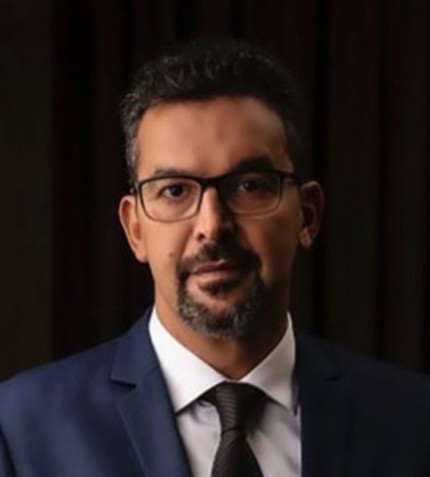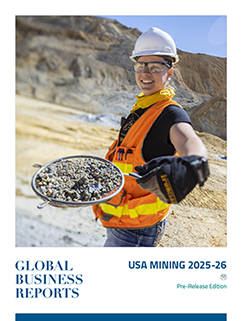
"La Coipa is one of the few operations in Chile that employs filtered tailings, allowing us to recover and recirculate 80% of the water used."
Patricio Pinto
EXTERNAL AFFAIRS DIRECTOR, KINROSS CHILE
How was 2023 for Kinross Chile?
Production at Kinross Chile grew 60% year-on-year from 2022-2023. 2023 was the first full year of operation for the processing plant at La Coipa after its restart. We focused on operational continuity, on reducing process variability, and benefitted from the quality of the growth of our Phase 7 deposit, which is the deposit we are currently exploiting. The mineral grades have also been promising. These are all positive signals that allow us to operate on budget and reinvigorate our strategic plan to return to operate in Chile.
What are La Coipa’s operational benefits?
La Coipa is operating aligned with the conditions of its pre-feasibility and feasibility studies. It is an ideal moment to be operating within the gold space, as the gold price has reached historical levels. La Coipa has low operational costs. We are translating the operational force into positive gains for the company.
La Coipa oxide extensions show promising opportunities to extend mine life to the end of the decade. We hope to extend it further, but this is a realistic target. We conducted three years of engineering studies to improve knowledge of the ore bodies through geology, geometallurgy, and geotechnical studies. In parallel, we are conducting environmental studies.
What is the importance of sustainable mining for Kinross’ operations?
At La Coipa, 100% of our operations are supplied by 100% renewable energy. The carbon footprint at La Coipa is much smaller than operations of the same size and those of the past.
Efficient water management is also key. La Coipa is one of the few operations in Chile that employs filtered tailings, allowing us to recover and recirculate 80% of the water used, which currently amounts to around 46 liters per second.
Mining is an activity that has a lot of interactions with the environment in which it is found. We are sensitive to this reality and take it into consideration before we design a project. Lobo Marte was designed to have a minimal impact on the surrounding environment and communities. Traditionally mining companies develop a project based on economic and technical criteria and then apply environmental protection measures. Kinross reverted this process, first designing with social and environmental commitments and then focusing on the economic and technical work.
What is the plan for Lobo Marte and recent advancements on the project?
The first step is obtaining the necessary permits. This year we have focused on updating baselines studies. We concluded the environmental impact study previously.
How does Kinross approach community relations?
Kinross has three Chilean assets in the Maricunga Gold Belt of Atacama that are shared with indigenous communities. This is significant because we have already developed long-term relationships with these communities through our operations at La Coipa. We have learned to share the territory. Lobo Marte is a greenfield project, but the community relationships will be a continuation of those developed at La Coipa. Continuous, honest, and open dialogue has helped us navigate the positive economic effects generated by mining activities, as well as the challenges we face. Hence, it is important for the Colla communities to participate in the baseline studies for future environmental instruments, as this demonstrates that our early engagement is happening across all areas. Learning from the past ensures stronger relationships for the future.
What are the dynamics behind the gold’s record-breaking prices?
The challenge of humanity to develop technology to live more sustainably not only requires metals like copper and lithium, but also gold. The use of gold in technology has become increasingly important. As a company we are preparing for both the opportunity and uncertainty created by the high gold price by developing new projects. We have mature assets, but also are developing new ones. We are ready to take advantage of gold’s high prices, but also for a time when the price naturally retreats.
What are Kinross’ strategic objectives for its Chilean operations?
The first is to successfully reoperate La Coipa which will act as a bridge for the development of our next big project, Lobo Marte. This will enable us to provide maximum benefit for not only our shareholders, but also for community in the Atacama. We want to generate economic benefit in a sustainable way.










